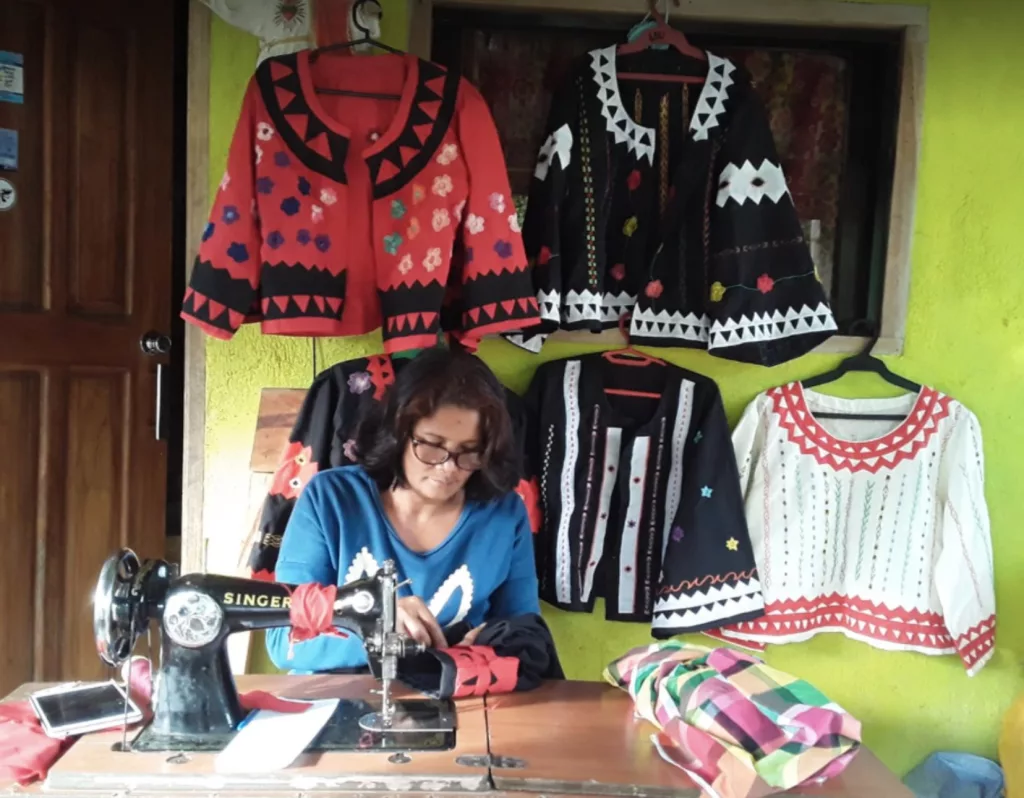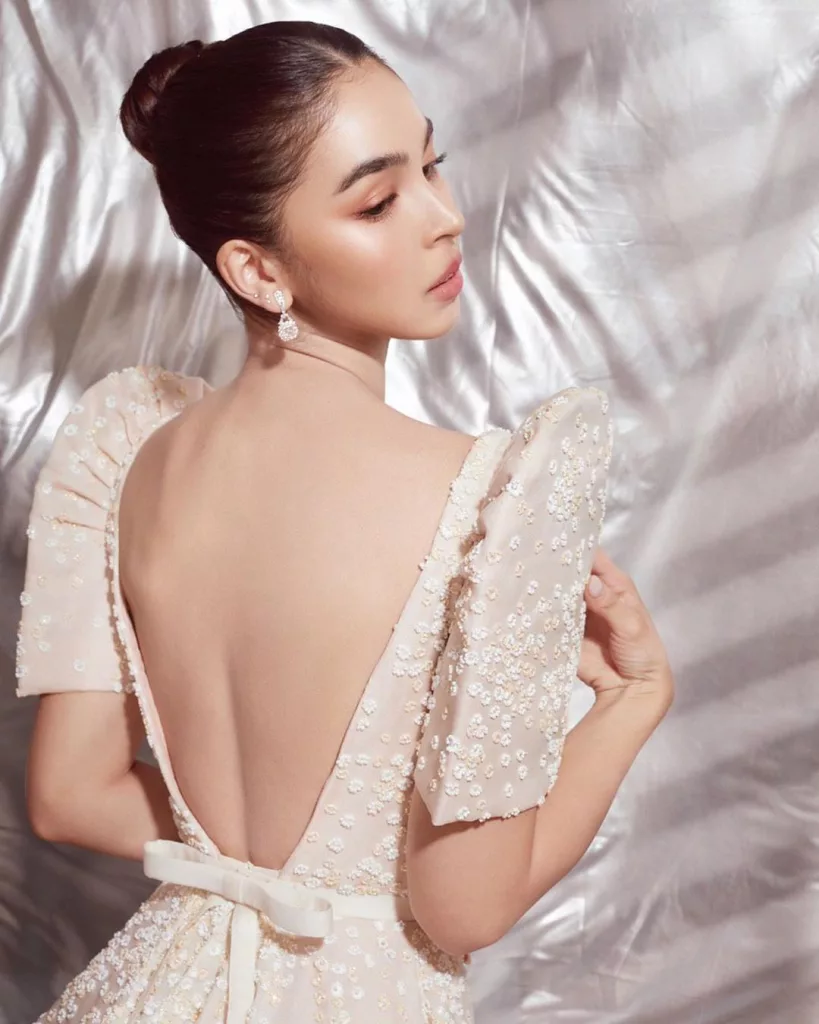Filipino Graduates Dress for Success with Traditional Clothing

Expressing pride in one’s cultural heritage can take various forms, and for many, fashion is a powerful means of celebration during major life events. When it comes to Filipinos, graduations and oath-taking ceremonies emerge as special occasions to exhibit their deep connection to tradition, given the significance the nation places upon academic achievement. Filipinos take pride in adorning themselves with traditional Filipino garments like the Barong, Terno, and the increasingly popular modernized Filipiniana as they stride across the stage during graduation ceremonies. Each piece of attire carries history, displaying the rich cultural heritage of the Philippines, and rendering these moments not just personal milestones but also reflections of a collective legacy. EnVi spoke to traditional Filipino clothing businesses and graduates alike, to share their experiences and how their personal connection to culture has shaped their journeys.
Preparing for Graduation Season
Balik Batik, a Filipino business that creates modernized traditional Filipino clothing with designs and fabrics that have been around for hundreds of years, is witness to this yearly occurrence. Veronica Baguio, owner and founder of Balik Batik, mentioned that March to August for graduations, and December for oath-taking ceremonies, are some of the busiest times of the year for the business. “When it’s graduation season, we kind of get ready. When we know there’s something like an oath-taking ceremony for the board exam passers — for example, the oath-taking ceremony of new lawyers — we kind of brace ourselves because we do expect more orders,” Baguio said.
Kayla Tiongson, a recent graduate from the University of the Philippines who also went to an oath-taking ceremony as a newly licensed Nutritionist-Dietitian in December 2023, ordered a custom Filipiniana dress of her own ahead of the ceremony.
According to Tiongson, state university students in the Philippines like herself express appreciation for the affordable quality education provided by the state through traditional clothing. This reinforces the growing trend of Filipiniana becoming more common in graduation attire, as the students weave cultural pride into their accomplishments.
Apart from the requirement that Sablays are always meant to be worn with a Filipiniana, Tiongson mentioned being a fond advocate for indigenous fabrics, thus why she went out of her way to use Inabel fabrics to design her own dress. “I just felt that I wanted my graduation dress to be a part of me, as a symbol of what I had to do to get that diploma. Designing clothing won’t be too hard if you are doing it for yourself. I had a clear vision of what I wanted to look and feel [like] in my graduation, so I just translated that into the design,” Tiongson added.
Traditional Clothing as a Manifestation
Academic success is often celebrated even before official confirmation, especially as students approach their final steps in high school or college. Baguio noted that students, prior to graduation or licensure exam results, eagerly order their ceremony outfits, manifesting and anticipating the moment they can finally wear them. “We’ve had people who are like, ‘I haven’t passed yet so I’m just gonna manifest it, I’m just gonna buy a piece already. My outfit is ready. All I gotta do is pass’ so I love it,” Baguio beamed. “I love being part of those special events, where you know people are proudly Filipino while celebrating their success.”
For Tiongson, donning traditional clothing during your ceremony is also a physical manifestation and symbol of your oath to serve the country through your field during graduation. “Being able to wear something made for the Filipinos, by the Filipinos makes it much more real for us,” Tiongson said. “People worked hard to make you shine that day, and now it is your time to pay it [back] and make something out of your education.”
Modernizing the Filipiniana
Having experienced pageants, Tiongson understands the significance of proudly showcasing local attire to express identity. Her first experience designing a dress was her graduation Filipiniana, with the help of the Ilocos-based brand HandWoven Beauty. Inspired by 1950s Dior aesthetics in its flow and square neckline, the dress featured butterfly sleeves adorned with pearl beadings, according to her belief that pearls complement Filipinianas perfectly. To infuse a modern touch, she also added a plunging back, inspired by Julia Barretto’s Filipiniana at the 2019 ABS-CBN Ball.

Rachelle Patalud, owner and founder of Clara Modiste, another brand of modernized Filipiniana apparel that shares the sentiment of adding modern elements to clothing with a deep history. She dreams that one day, Filipinianas will not only serve as formal wear for events but also as casual wear to a new generation of Filipinas — and putting out affordable pieces is the first step. “We saw an opportunity and this is the gap we’d like to fill in. Our clothing line’s mission is to provide modern Filipinas with affordable, fashionable and quality casual Filipiniana, without having to look like you are about to crash a party,” Patalud shared.
For Balik Batik, Baguio grapples with the same task of balancing both tradition and socially-appropriate modernity. The fabrics utilized in her creations carry tradition, but it’s transforming them through silhouettes and styles into pieces like bomber jackets, denim jackets and crop tops that makes them better appeal to younger audiences.
Baguio’s journey into Filipino weaves started in college, spurred by her fascination with handwoven fabrics. In March 2020, a simple wish to buy traditional daily wear for herself led to unexpected online recognition and sparked the start of her business, when her tweet about purchasing Filipino weaves gained traction with over 1,000 likes. “I was like, ‘Oh my god, I’m famous. So many people want this, too.’” Baguio said with a laugh. “That’s why I say it’s such a Gen Z/millennial thing to happen — to start a business because [of] a viral tweet. So that’s it. I didn’t plan on doing a fashion brand. It just kind of happened.”
Honoring the Filipino Heritage
A common goal within any modernized Filipiniana brand is the desire to uplift indigenous weavers and age-old fabrics. According to Patalud, another one of Clara Modiste’s goals is to help local dressmakers in Taal, Batangas, where the town’s women’s primary business is century-old dressmaking and embroidery. “They are so talented, yet so little is known about them. We hope to raise awareness about our roots in Taal as the Barong Tagalog capital of the Philippines, while also helping our local dressmakers,” Patalud added.
Balik Batik, on the other hand, works with up to fifth-generation weavers and has even had the opportunity to touch, see, and utilize fabrics that are over a hundred years old. Some designs are personally embroidered by Panay Bukidnon women of Ilo-Ilo who are highly involved in the process.
Both business owners have mentioned the opportunity of also helping diasporic Filipinos represent their pride and heritage through clothing, despite being miles away from the homeland. Patalud even recalled hearing from a very happy mother ordering a graduation dress for her daughter in New York who wanted to represent her family’s culture.
“One reason why I like to work on clothing is because it’s a public message of who you are — because what you wear is a very strong message of who your identity is,” Baguio said. “So we do have a lot of Filipinos or Filipino Americans who order from us because they want to get in touch with their heritage. Not just get in touch with it, but express it and send the message of, ‘I am Filipino/Filipina,’ and it’s very visual storytelling.”
Interested in more cultural revolutions within style and fashion? Check out our article on the new era of Henna art here.



